Project team
- Josephine Wang
- Shirley Wu
We brainstormed a few ideas, and decided to concentrate on an idea of taking off shoes in the entryway of a hotel room and lining it up perfectly will turn on the main room light.
After getting feedback from Pedro that the interaction might be too complicated (the act of trying to line the shoes up "perfectly" might become frustrating), we decided to start simply and start prototyping to answer the questions:
- What kind of shape would be obvious that shoes should go in it?
- How can we connect that putting shoes into this object will turn on the lights?
Here are our prototypes:
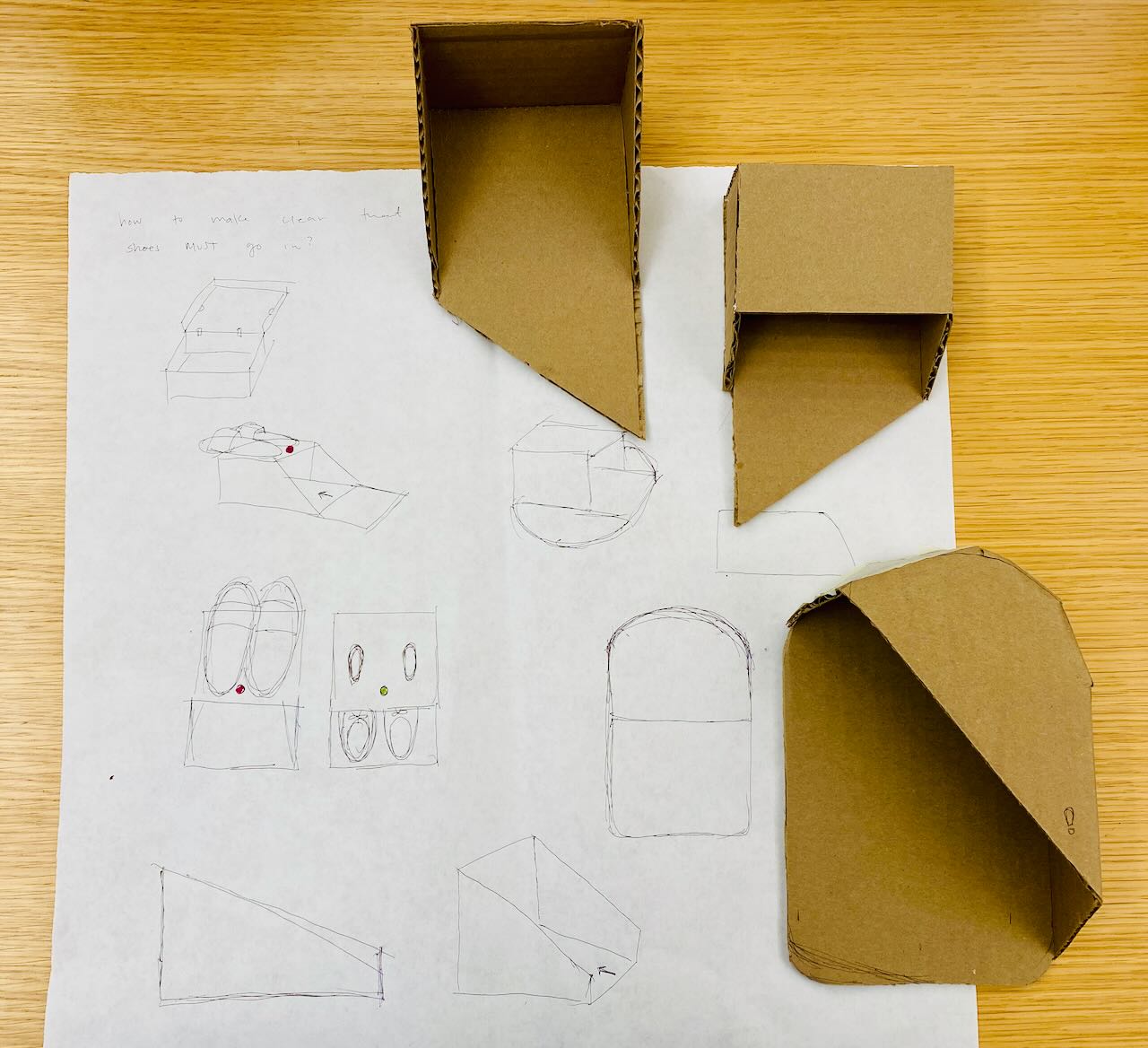
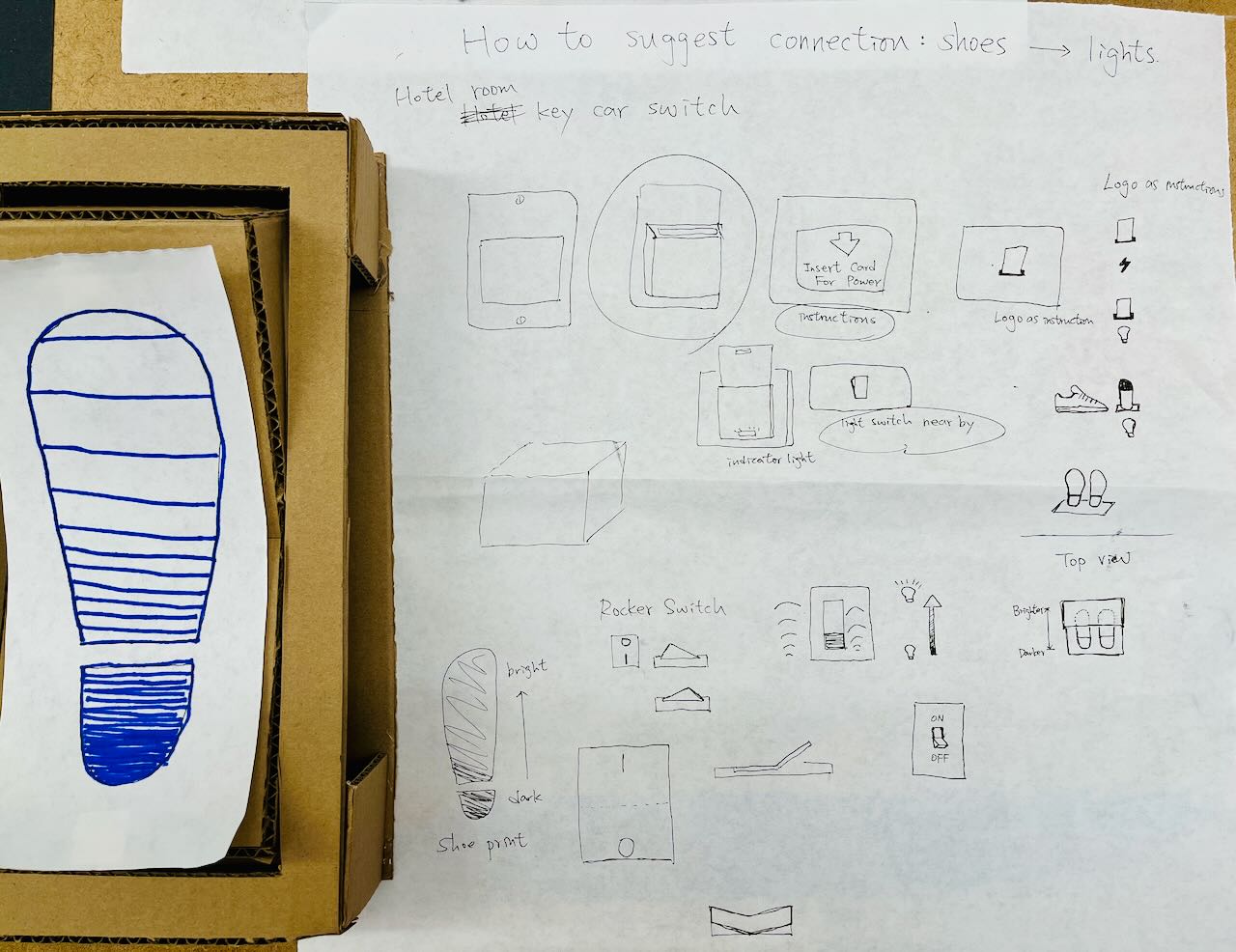
Top right: prototyping a form that can indicate that putting shoes in will activate the light.
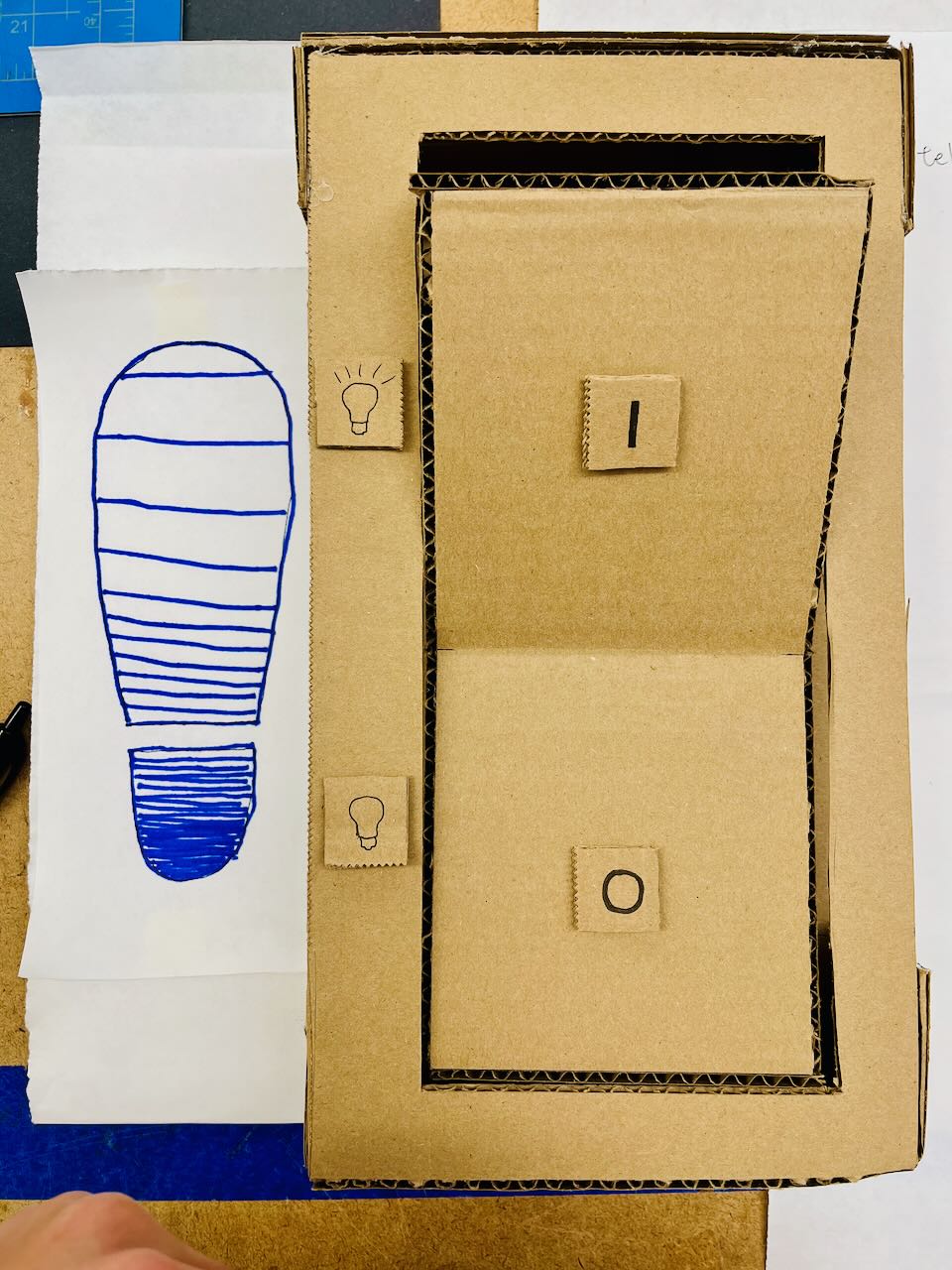
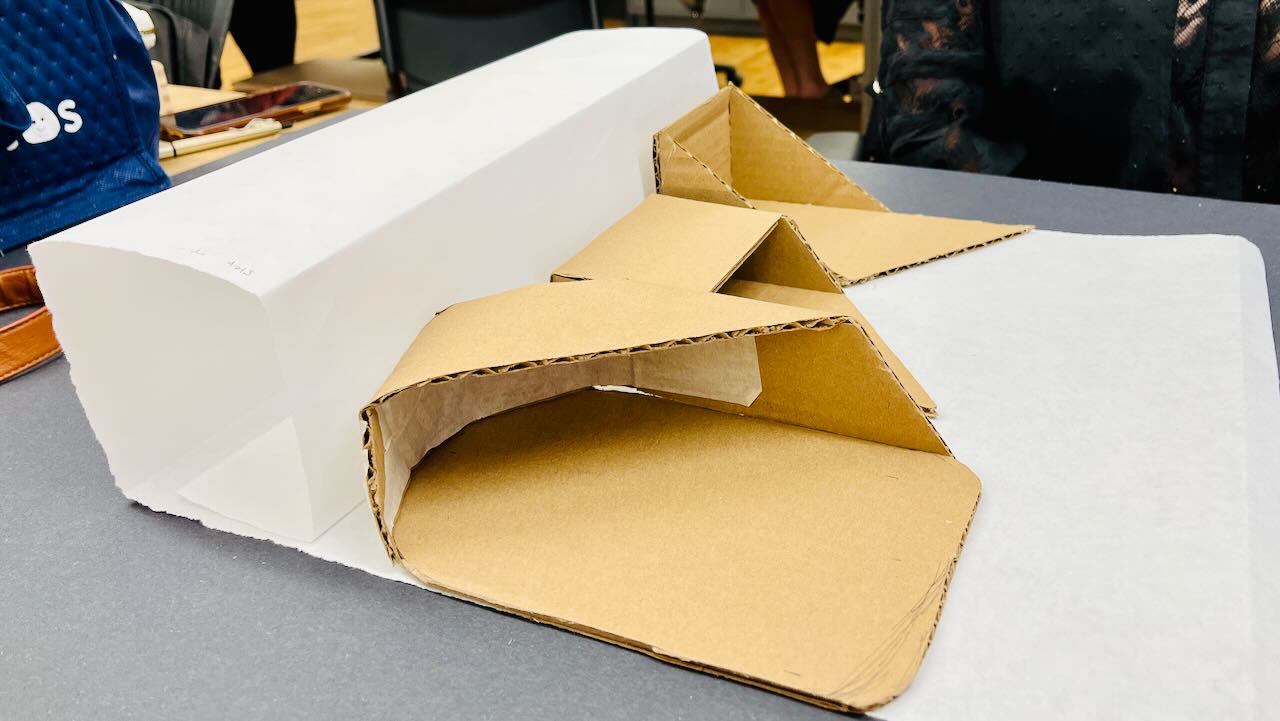
We then went to feedback collective, some of the feedback that really stood out was:
- the entryway as a divider of outside space and inside space, that taking off shoes is a ritual of entering a home. So how can we make an object that can be welcoming and convey that the guest can treat the hotel room as their home?
- the shape with no cover (center top in first image) was the most appealing because it can potentially fit any shoe type/size
- if no icon to indicate shoes, then perhaps use a texture that alludes to the ridges on the bottom of shoes instead
- indicator lights on the object that pulsates would be helpful to call attention to it
In general we received positive feedback but the conversation also revealed the biggest design flaws, which was: what if a person comes in and takes off their shoes and that turns on the room lights. But now they're heading back out but in a different pair of shoes—do they have to take the first pair of shoes out of the object?
When I was talking this through with my husband, he had the interesting suggestion of having the object be for putting slippers in instead. This solves a lot of the problems:
- Because slippers would be hotel provided, we can be very specific with the size and design a container specific to it
- We had wanted to include slippers somewhere in the original design (as another prompt to take off shoes) but struggled with where to place it relative to the shoes. Now it can be the central thing.
- Guests will only ever have one pair of slippers each, so when they're headed out they can put them back into the container. If there are two or more guests, either they'll all be leaving, so all their slippers will be back in their respective containers and the room lights will turn off, or at least one person is remaining in the room so the lights should remain on.
- Because the slippers are much lighter than most shoes, we can place them higher on the wall, closer to where people would normally expect a light switch to be, to make a closer connection between the container as light switch.
Here's a quick drawing of the updated idea, which is meant to go on the wall:
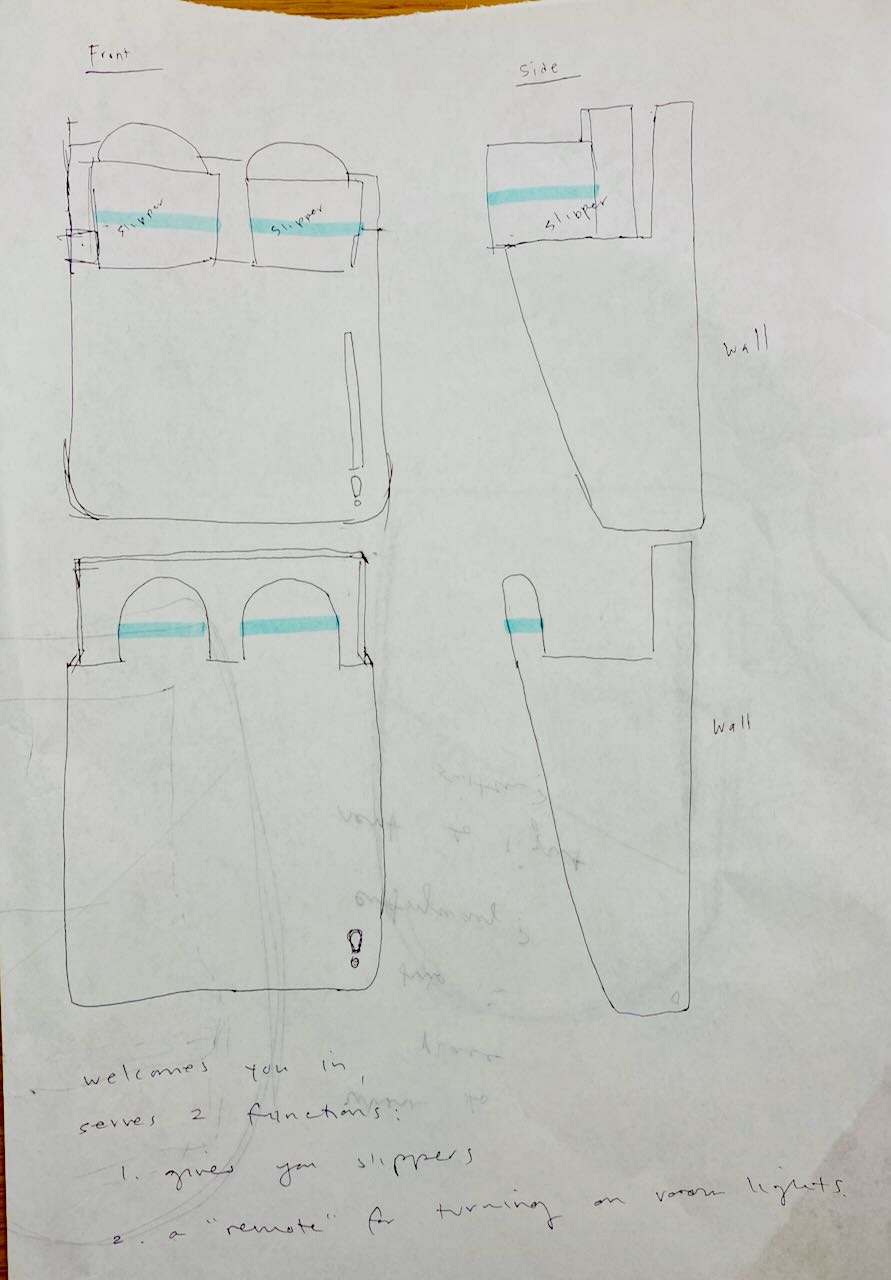
We're still struggling with what problem we're trying to solve, and also which additional axis of absurd we want to go towards (absurd form, interaction, or function).
prototyping
With some further brainstorming, we agreed that perhaps rather than slippers turning on lights, that a light switch in the form of slippers might be more absurd. We landed on night lights on slippers as our final concept, and we like it because:
- it doesn't have to be on throughout the night, thus potentially disturbing sleep
- it doesn't have the problem of being stationary and only lighting up one part of the room, since the person wears it around
electronics
For the electronics, we wanted it to only light up when it was dark enough and to conserve battery, the whole circuit will be powered only when a person is wearing the slippers. We also wanted it to be small, low profile, and light. To accomplish this, our circuit includes:
- ATtiny84 (later converted to ATtiny 85)
- photo resistor
- capacitive switch
- rechargeable lipo battery (also considered coin cell battery, which would be easier to replace)
- (it'd be fun in a future iteration to build a contactless charging dock that the slippers can hang on and recharge)
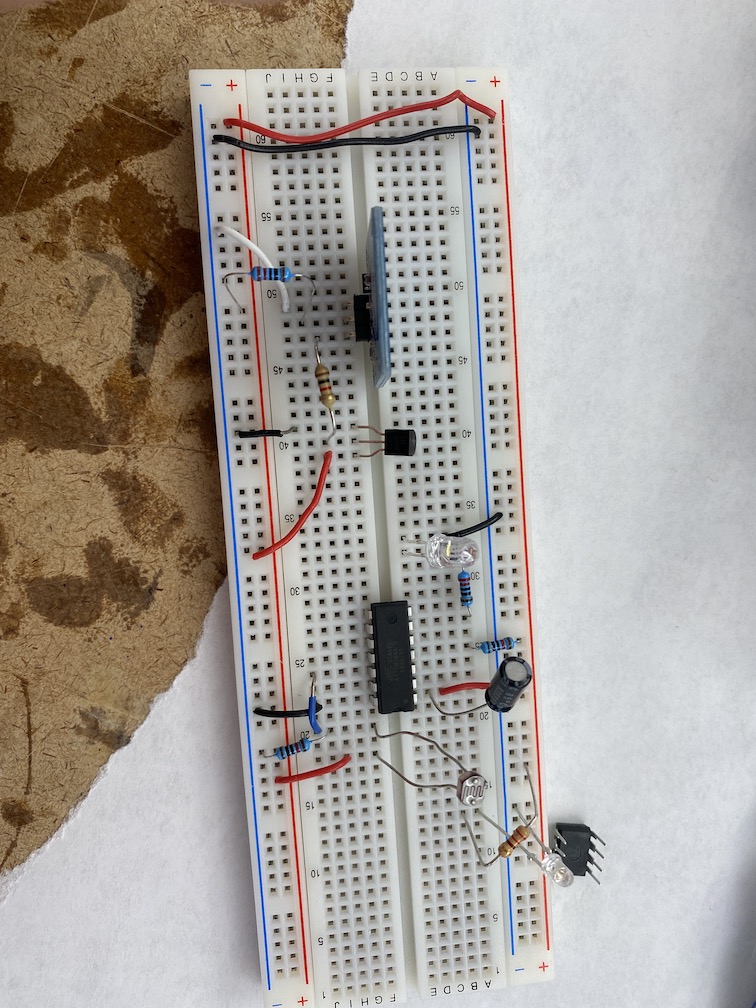
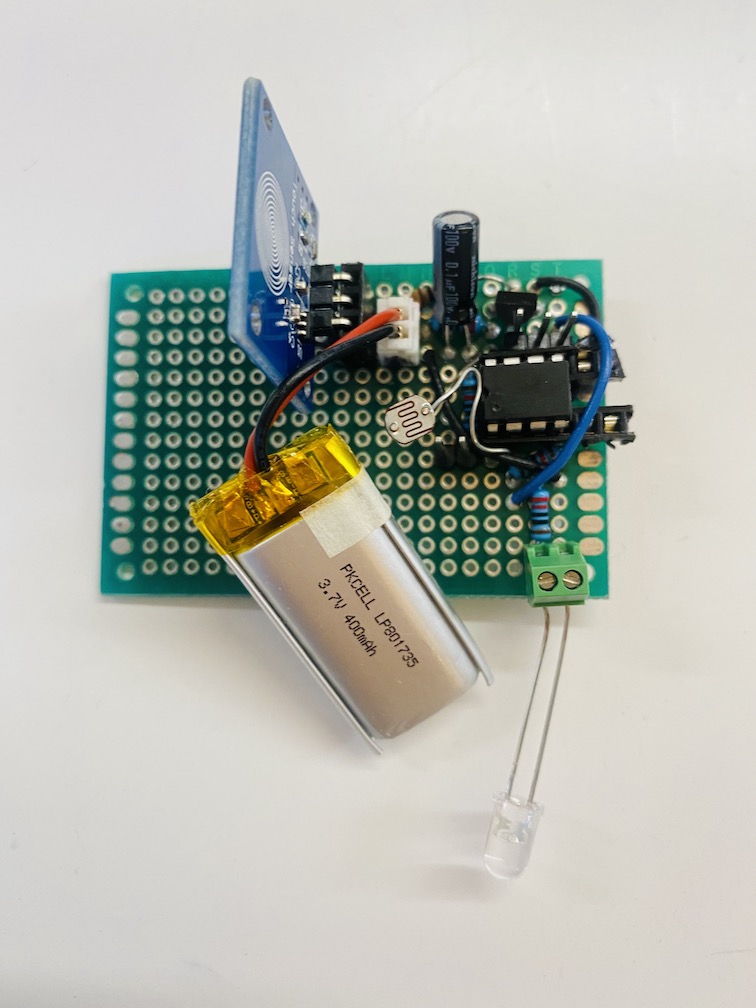
(For the longest time I thought analogRead wasn't working on ATTiny but it was just that I couldn't do serial debugging bc ofc I can't. Once that was cleared, up, the electronics worked beautifully.)
fabrication
Since we switched from a shoe/slipper case (something hard) to modifying slippers themselves (something soft), we tried prototyping with clay:
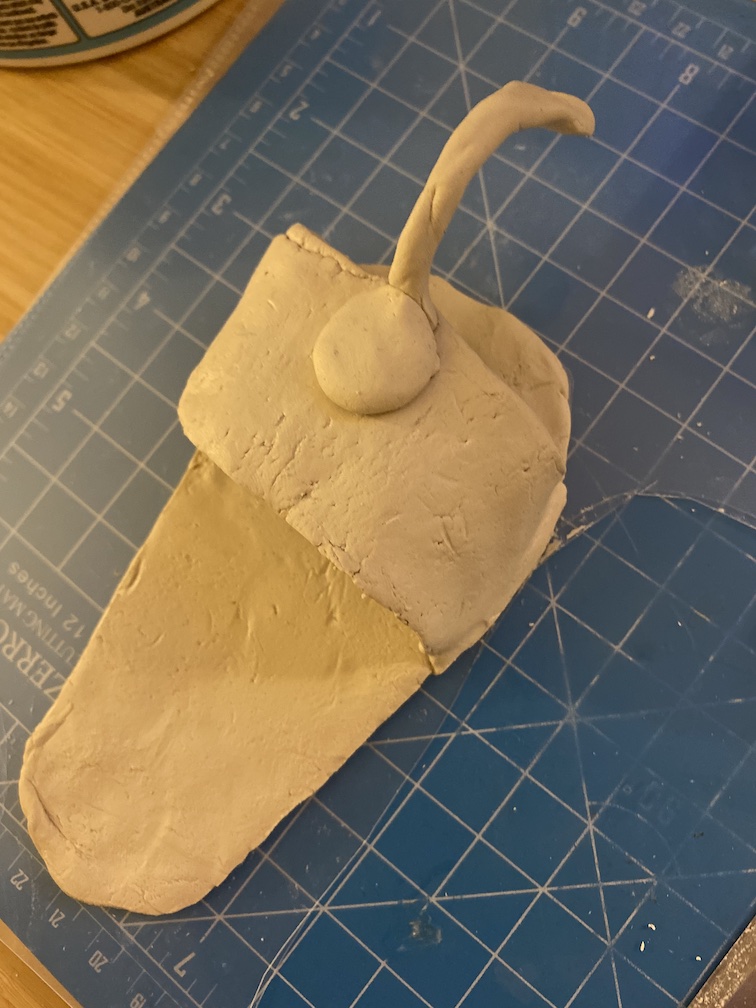
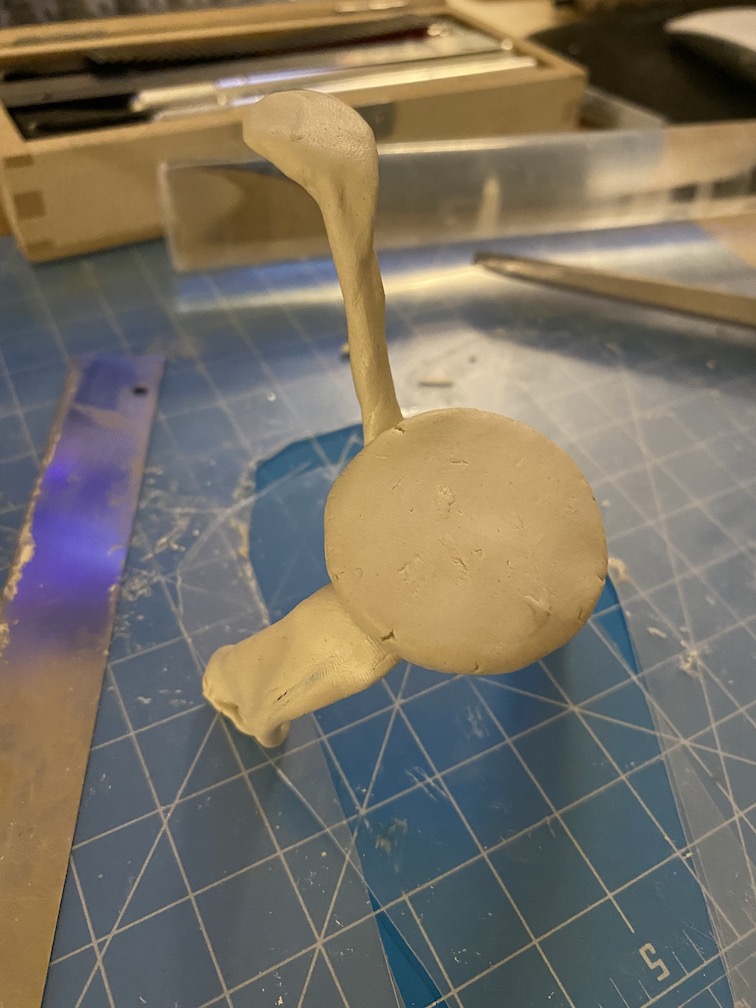
And once we got some slippers, we were able to ask resident Daniel for advice on how to put everything together, which was super helpful. Here are some photos of us miming the parts, as well as a chicago screw for easy attaching/detaching of the electronics:
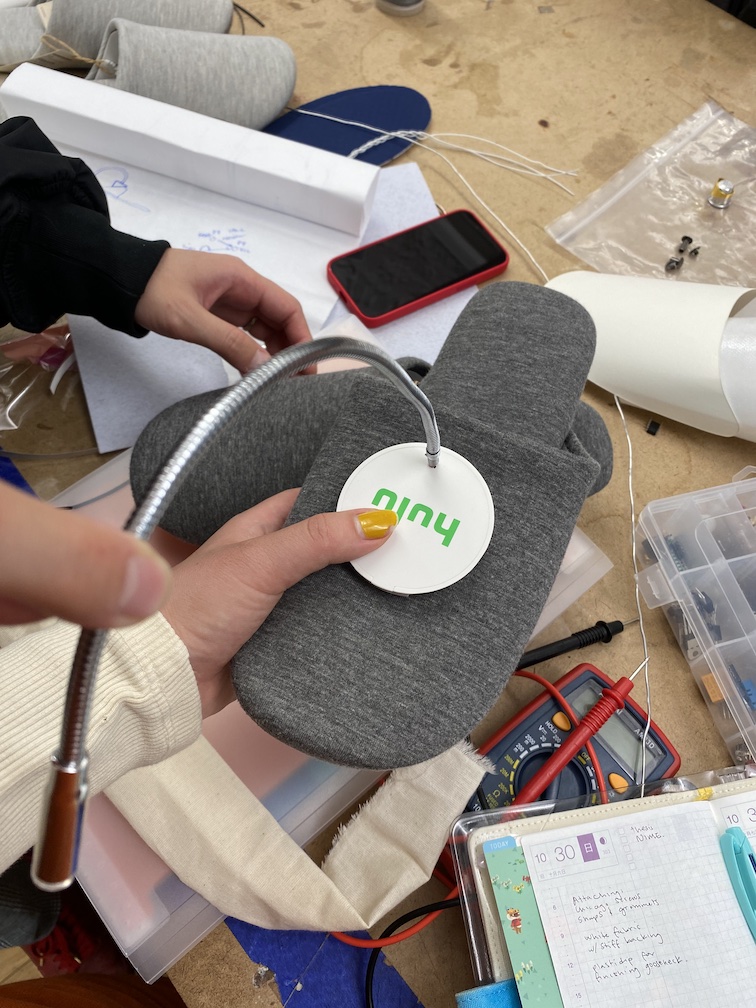
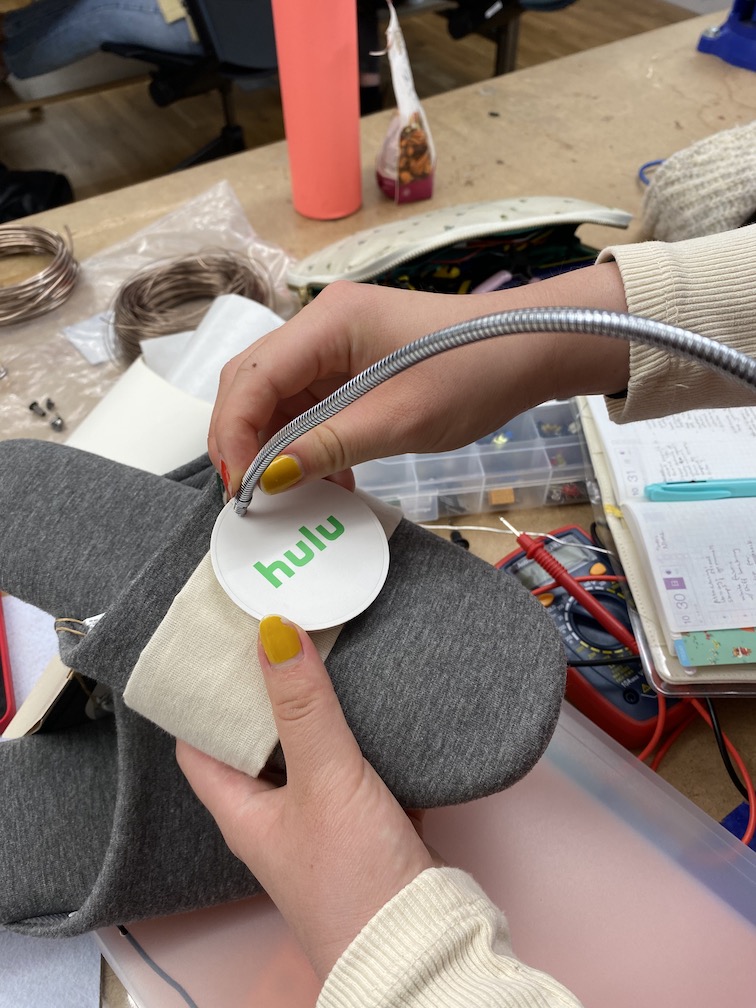
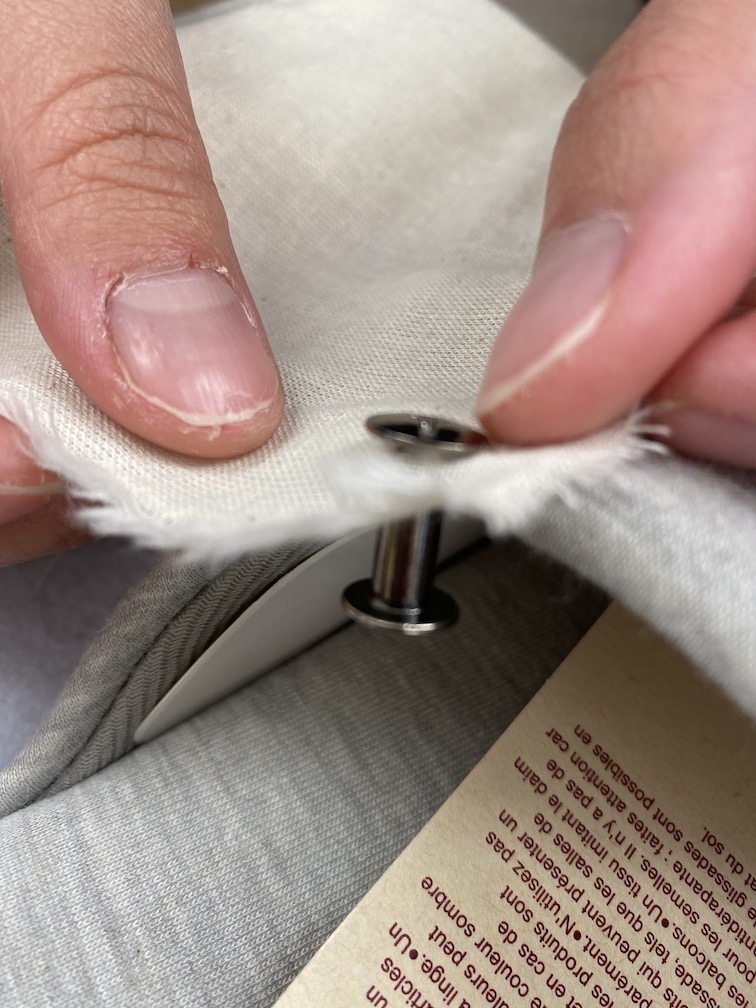
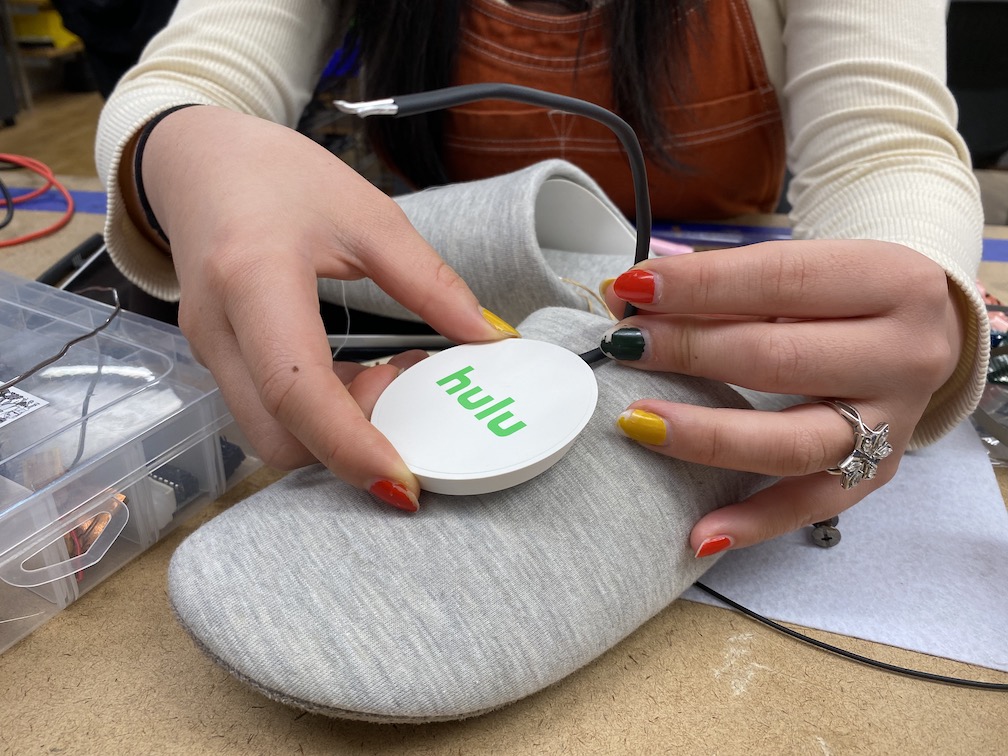
And our materials for fabrication:
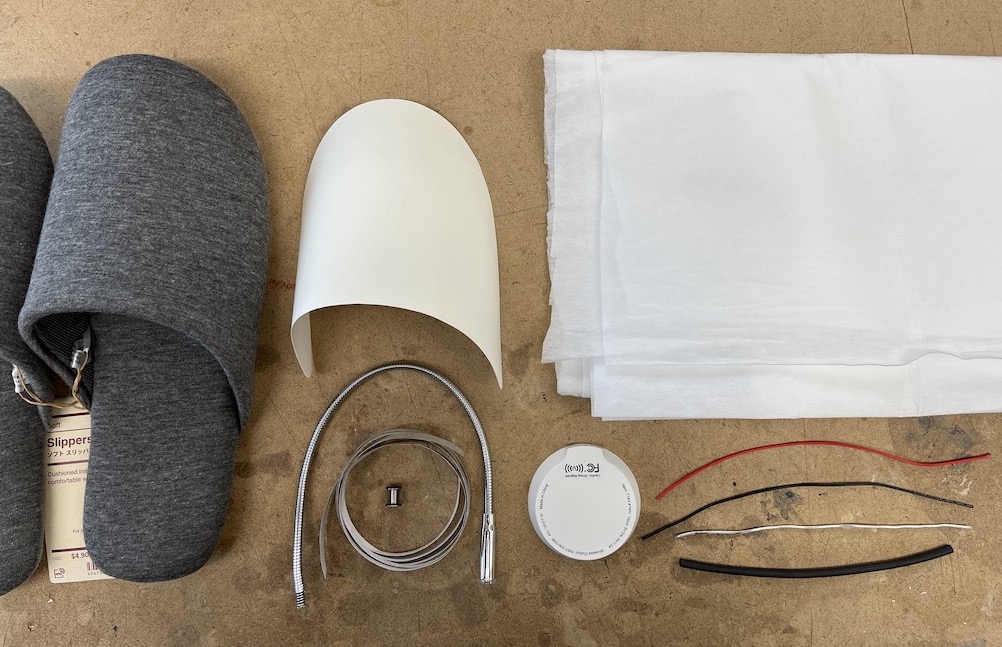
And a final prototype using fabric:
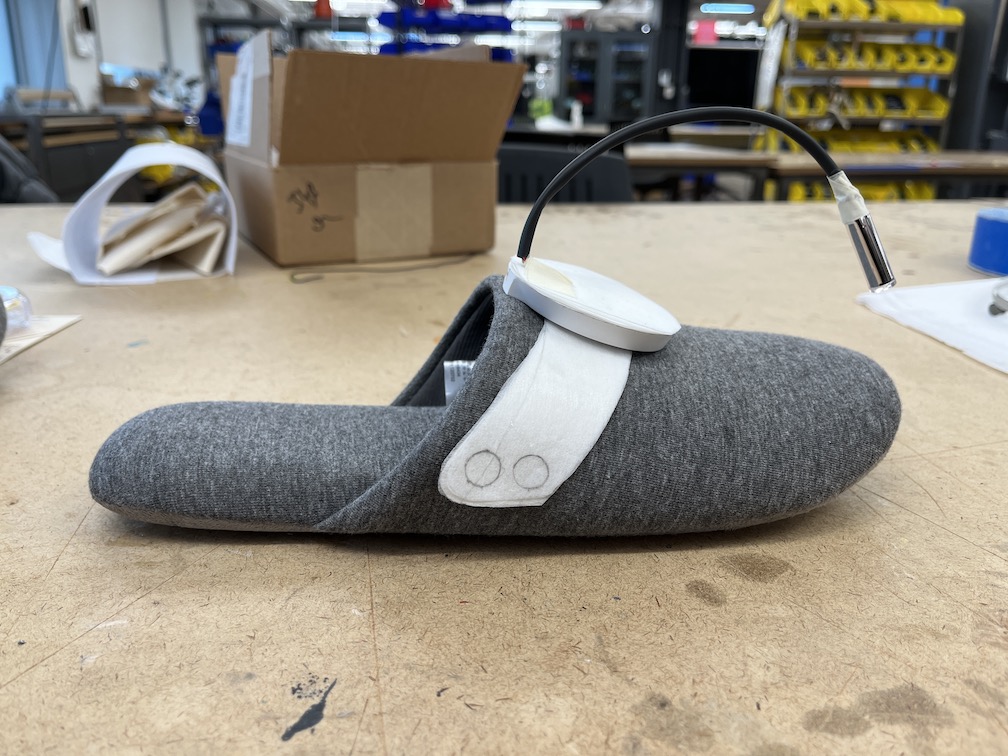
timeline
Friday/Sunday
- re-do protoboard and design enclosure (Shirley)
- construct light, spray paint its enclosure (Josephine)
- 3D print enclosure (Shirley)
Monday/Tuesday
- make sure enclosure works, attach light, encase in fabric (Josephine)
- attach conductive fabric to inside slipper, make sure it can come into contact with capacitive switch in enclosure (Shirley)
Wednesday
- attach enclosure to strap, attach whole thing to slipper (Josephine & Shirley)
- document